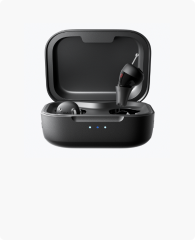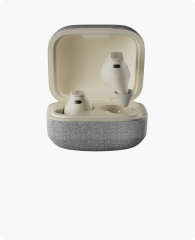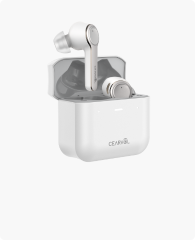Open fit hearing aids have revolutionized the way individuals with hearing loss experience sound, offering comfort and natural auditory perception. This guide delves into various aspects of open-fit hearing aids, including their definition, comparisons with other types, suitability, costs, advantages, disadvantages, and selection criteria.
🚀 Navigate This Post
- ➤ Part 1: What are Open Fit Hearing Aids?
- ➤ Part 2: Differences Between Open Fit Hearing Aids & BTE Hearing Aids
- ➤ Part 3: What are Open Fit Hearing Aids Best for?
- ➤ Part 4: Open Fit Hearing Aids Cost
- ➤ Part 5: Pros of Open Fit Hearing Aids
- ➤ Part 6: Cons of Open Fit Hearing Aids
- ➤ Part 7: How Do You Choose Open Fit Hearing Aids?
You may also be interested in:
- Ringing in Ears? Cost and Value of Best OTC Hearing Aids for Tinnitus
- Understanding Unilateral Hearing Loss: Symptoms, Causes, and Treatments
- Are You Secretly Going Deaf? Find Out the Safe Decibel Levels Now!
Part 1: What Are Open Fit Hearing Aids?
Open fit hearing aids are a subset of behind-the-ear (BTE) devices characterized by a thin tube or wire that connects the hearing aid to an open ear dome placed in the ear canal. This design allows natural sounds to enter the ear alongside amplified sounds, providing a more natural listening experience, which is recognized as the best OTC hearing aids type in the market.
Key Features:
- Design: Small, lightweight, and discreet, with a comfortable fit.
- Sound Quality: Reduces the occlusion effect, minimizing the sensation of a plugged ear.
- Ventilation: The open dome permits air and sound to flow freely, maintaining ear canal health.
For those seeking advanced options, Cearvol hearing aids offer innovative solutions that align with the open fit design principles.

Diamond X1 - Best Hearing Aids with Bluetooth
Newcomer Price
$249.99 $309.99
- ✔ Adaptive sound modes for clear hearing.
- ✔ Bluetooth for calls & streaming.
- ✔ App-controlled, customizable adjustments.
- ✔ Rechargeable & fast charging.
- ✔ Ideal for mild to moderate hearing loss.
Part 2: Differences Between Open Fit Hearing Aids & BTE Hearing Aids
Open-fit hearing aids are a smaller, less visible variation of behind-the-ear (BTE) hearing aids. Both styles have a receiver that sends sound to the ear, but open-fit hearing aids have a more open design.
| Category | Open-fit Hearing Aids | Behind-the-Ear (BTE) Hearing Aids |
|---|---|---|
| Design | Smaller, less visible | Larger, more visible |
| Ear Canal | Leaves ear canal open | Hooks over ear and connects to an ear mold |
| Sound | Amplifies high-frequency sounds and allows low-frequency sounds to enter naturally | Amplifies sound |
| Suitability | Good for mild to moderate hearing loss | Versatile and robust performance |
Open-fit hearing aids are a good choice for people who are sensitive about their hearing impairment. They are also less susceptible to blockages from earwax.
BTE hearing aids are often chosen for their robust performance and versatility. However, they can be less comfortable for some people due to their size. They also tend to be susceptible to wind and background noise.
Part 3: What Are Open Fit Hearing Aids Best For?
Open fit hearing aids are particularly advantageous for specific hearing profiles and lifestyles.
1. Mild to Moderate High-Frequency Hearing Loss
These devices amplify high-frequency sounds without obstructing low-frequency sounds, making them ideal for individuals who struggle with higher-pitched sounds but still perceive lower frequencies well.

2. Active Lifestyles
The secure yet comfortable fit of open fit hearing aids makes them suitable for active individuals. The open design reduces the likelihood of sweat accumulation, enhancing durability during physical activities.
3. Natural Sound Perception
By allowing natural sounds to enter the ear canal, open fit hearing aids provide a balanced and natural listening experience, which is beneficial for users who prefer minimal alteration to ambient sounds.
Part 4: Open Fit Hearing Aids Cost
The cost of open fit hearing aids varies based on factors such as technology level, brand, and additional features.
1. Price Range
- Basic Models: Approximately $1,000 to $2,000 per device.
- Advanced Models: Up to $3,000 or more per device, depending on features like Bluetooth connectivity and advanced noise reduction.

2. Factors Influencing Cost
- Technology: Devices with cutting-edge features and customization options tend to be more expensive.
- Brand Reputation: Established brands may command higher prices due to their track record of quality and service.
- Professional Services: Costs may include audiologist consultations, fittings, and follow-up appointments.
3. Insurance and Financing
Some insurance plans may cover part of the cost of hearing aids. Additionally, financing options or payment plans might be available through hearing aid providers. There are also some option like affordable Bluetooth hearing aids in the market for better hearing experience.
Part 5: Pros of Open Fit Hearing Aids
Open fit hearing aids offer several advantages that cater to user comfort and auditory satisfaction.
1. Enhanced Comfort
The open dome design reduces the feeling of a blocked ear, providing a more comfortable user experience.
2. Natural Sound Quality
By allowing unamplified sounds to enter the ear canal, users experience a blend of natural and amplified sounds, leading to a more authentic hearing experience.

3. Discreet Appearance
The slim tubing and behind-the-ear placement make open fit hearing aids less noticeable, appealing to users seeking a subtle solution.
4. Reduced Feedback
The open fit design minimizes the likelihood of feedback or whistling sounds, enhancing overall sound quality.
Part 6: Cons of Open Fit Hearing Aids
Despite their benefits, open fit hearing aids may present certain limitations.
1. Limited Amplification
They may not provide sufficient amplification for individuals with severe hearing loss, as the open design can allow amplified sound to escape.
2. Potential for Sound Leakage
The open dome can lead to sound leakage, which might be picked up by others nearby, potentially causing privacy concerns.
3. Susceptibility to Wind Noise
The open design can make these devices more prone to picking up wind noise, which may affect sound clarity in outdoor environments.

Part 7: How Do You Choose Open Fit Hearing Aids?
Selecting the appropriate open fit hearing aid involves considering various factors to ensure it meets your specific needs.
1. Assess Your Hearing Loss
Consult with an audiologist to determine if your hearing loss falls within the range that open fit hearing aids can effectively address.
2. Evaluate Features
Consider which features are essential for your lifestyle, such as Bluetooth connectivity, rechargeable batteries, or directional microphones.
3. Cost Considerations:
Assess the overall expenses, including ongoing maintenance and accessories. Be sure to account for the cost of batteries, replacement components, and any possible service charges. Additionally, certain hearing aids may have extra fees for features such as remote assistance or extended warranty coverage.
Conclusion
By understanding the unique benefits of open fit hearing aids, you can make an informed choice that enhances both your hearing and daily life. For personalized recommendations, explore Cearvol’s innovative solutions tailored to modern lifestyles.








Leave a comment
All comments are moderated before being published.
This site is protected by hCaptcha and the hCaptcha Privacy Policy and Terms of Service apply.